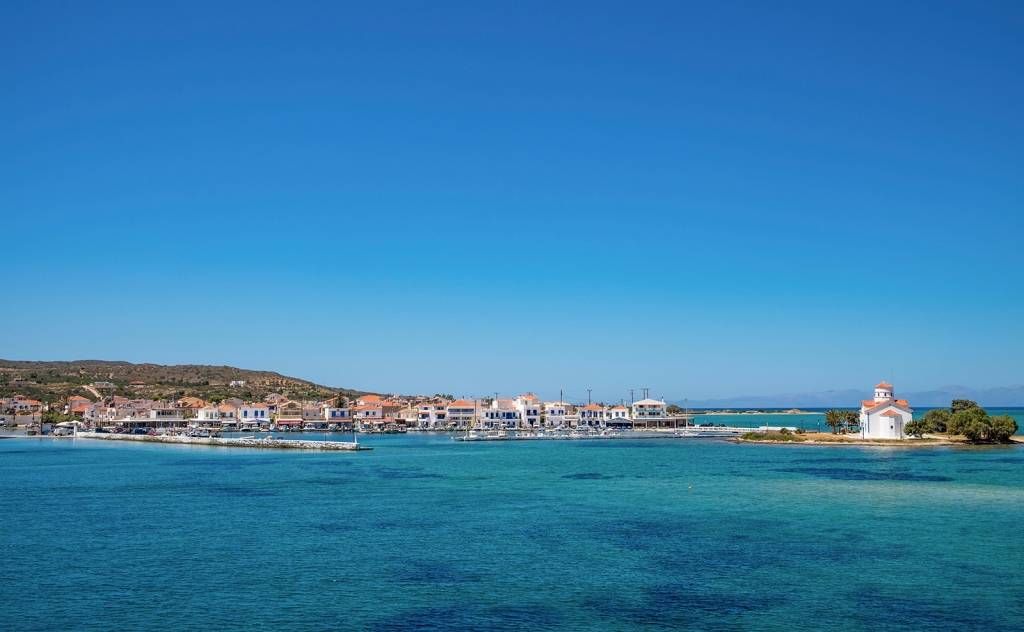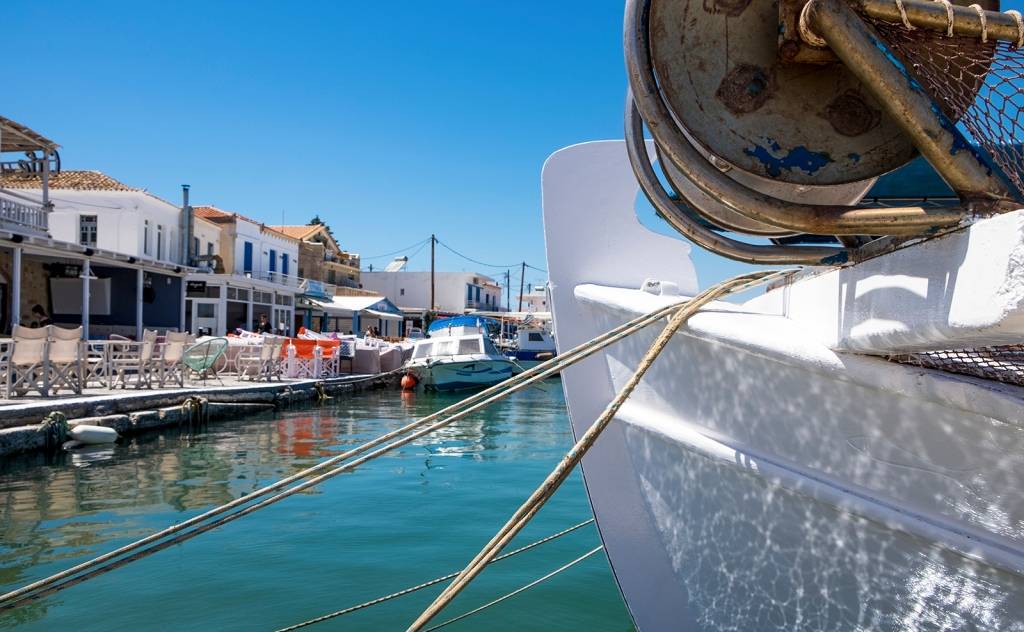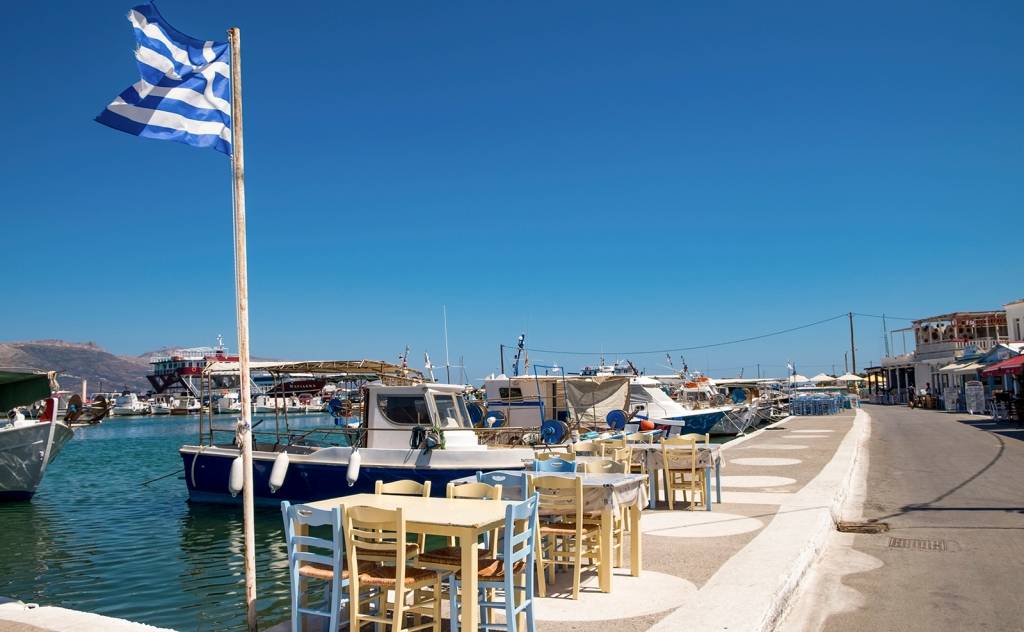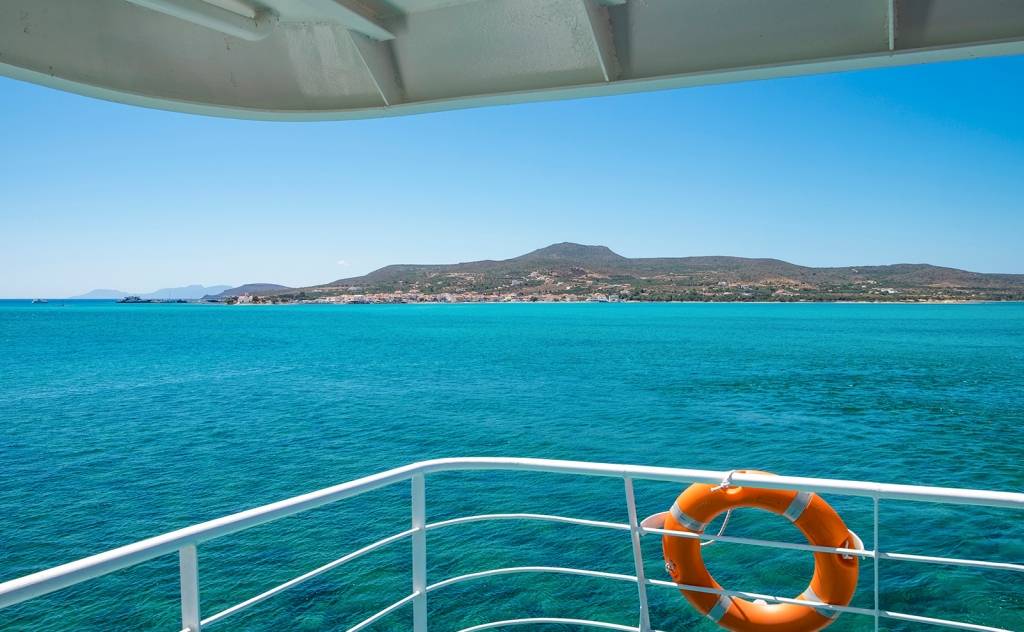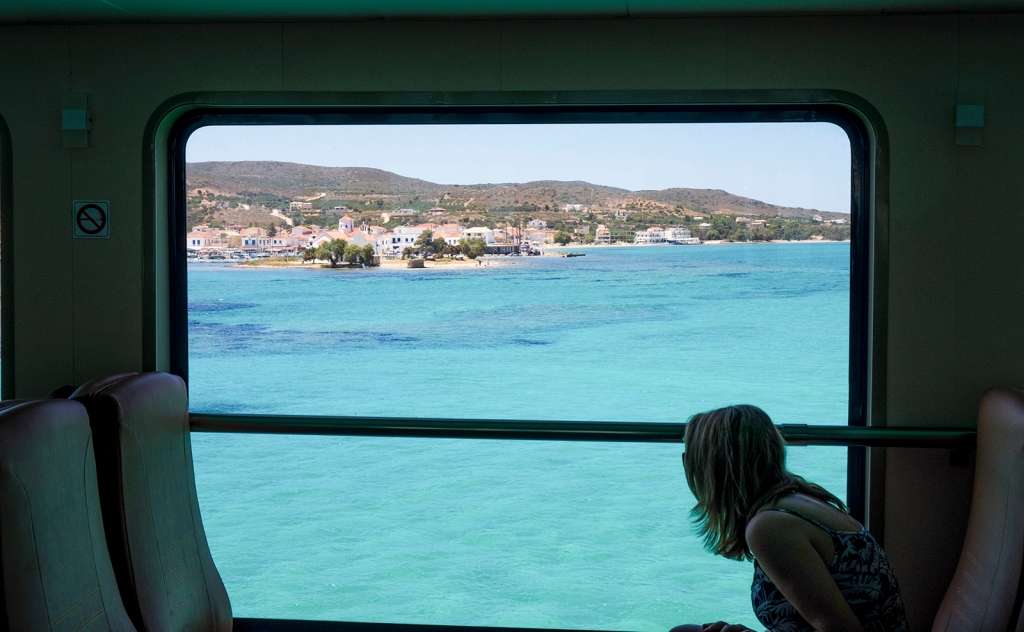Elafonisos
Seductive Elafonisos, with its crystal-clear waters and vast golden beaches, is located at the beginning of the eastern entrance section of the Laconian Gulf, west of Maleas and north of Kythera.
It has a total area of 22 square metres and consists of the village of Elafonisos and the settlements of Kapari, Kato Nisi, Lefki and Pounta. It is located 500 metres from the opposite shore. The island's population is about 600 inhabitants, while in the summertime, this number doubles. The twin beaches of Simos (Mikri Paralia – Small Beach) and Sarakinikos (Megali Paralia – Big Beach or Tseratsiniko for the locals) are among the best in the entire Mediterranean. Of course, visitors have to choose among many other beautiful beaches, such as Lefki, Panagia (or Limnitsa), Pounta, Kontogoni etc.
Elafonisos is a protected habitat of Natura 2000. The area includes shrubs, floating coastal dunes, sandy beaches and juniper forests (cedars). The island is ideal for nature lovers with rare flora and fauna, while the area is considered an essential station for migratory birds. In total, about 220 species of plants have been recorded, 9 of which are extremely rare, as well as 65 species of fauna. Thirteen of them are protected, and eight are in danger of extinction.
Elafonisos has six hiking trails and three cycling trails. The most famous hiking trail starts from the port of Chora, passes through the village of Vigla and ends at the top of Vardia. Vardia is the island's highest point (276 metres), from where you can admire Cape Tainaro, Kythera and Kavo-Malia. Also, when you are there, don't forget to take a tour of the island with a local boatman. The experience will be unforgettable. Elafonisos is also suitable for alternative activities such as surfing, kite surfing, underwater diving and snorkelling.
The history of Elafonisos dates back to the Neolithic period (6000-3500 BC), during which a brilliant Prehistoric civilisation flourished. Traces of this culture can be seen at Pavlopetri - the oldest underwater city in the world. Since then, the historic route of Elafonisos and the surrounding area has been linked to the Peloponnesian War, Thucydides, the Romans, Byzantium, piracy, the Venetian-Turkish naval battles and the Navarino Naval War. In ancient times, Elafonisos was not an island, but the "ONE GNATHOS" peninsula, as, at that time, its shape referred (according to Pausanias) to the appearance of a donkey's jawbone. During his tour, he placed the city in the now-sunken area of the islet of Pavlopetri. The current name of Elafonisos is due to the rich hunting that has been going on in the area since antiquity. According to Pausanias, there were many sanctuaries dedicated to Artemis due to the existence of a huge number of tiny red deer. Even the famous statue of Artemis, which is now exhibited in the Louvre Museum (which holds such a deer), has been found in the area. The first mention of the name of the island is found in an Arabic manuscript from the times of the pirates (7th century), where it is referred to as "Ashab al baqar", meaning "the island of deer". This name is again found on 16th-century naval maps, as "Isola di Cervi" ("Deer Island"). Finally, according to Venetian maps of the 15th century, Elafonisos was depicted as CERVI.
To the south of the island, one can see Kythera from a distance and the Strait of Elafonisos or "Bogazi of Tsirigos", as the locals call it, between the two islands. It is the well-known English Cervi Channel found on almost all maps, especially from the Middle Ages. Poet Gencer, in his poem "The First Sailor", states that the first sailor in the world was a young man who sailed the Strait of Elafonisos on a tree trunk when an earthquake separated Kythera from Elafonisos and him from the girl he was in love with. In fact, this poem was included in "Ethical Tripod", which was published by Rigas Feraios.
In the northern part of the island, visitors can see the "Cross", a small piece of land where the lighthouse is located, known by the locals as "Spitha". The lighthouse marks the entrance to the port of Elafonisos. It was built after the historic shipwreck of the ocean liner "Imperatrice" that occurred on the island's shores in the winter of 1907. In this shipwreck, 300 people lost their lives.
At the port entrance, the church of Agios Spyridon dominates a rocky islet, which is connected to the mainland by a picturesque bridge. Next to the church, there is a ruined windmill. The bridge was built in 1954-1955. The church of Agios Spyridon was built on the initiative of the well-known Grigorakis family from Mani in 1858 and was renovated in 1862. The interior of the temple is simple. On the iconostasis (made of Maltese stone), visitors can see various icons, such as that of the Virgin Mary the Infant carrier, St. John the Baptist (1870) and St. John Theologos (1882). The image of St. George, the dragon killer, is of particular historical interest. It was painted in Asia Minor in 1921 and bore the inscription "saved ... as a souvenir of abandonment of Central Asia". According to tradition, the Saint himself imposed his presence on the island, as well as the point of the reconstruction of the temple: Initially, the church would be built at a different place and would be dedicated to St. Nicholas, patron saint of sailors. He who had decided to build the church was collecting materials on the edge of Elafonissos, opposite the island. But an old man appeared before him and told him to build it on the island. The man replied that this was difficult since there was no bridge today. The old man appeared in front of him once again. When the man asked him who he was, he replied that he was Saint Spyridon. Thus, the church began to be built in 1850 and was completed in 1858. It was inaugurated on July 9th, and Saint Spyridon became the island's patron saint.
If you are lucky enough to be on the island in the last ten days of August, you can attend the Fishermen's Day celebration at the port square. It is a traditional event of the historical Fishermen Association "Elafonisos". The event includes traditional, local dances, live music, plenty of wine and, of course, fresh fish. Individual events accompany the celebration. Finally, the traditional sweets of the island that you should definitely try are "samousades" (kind of baklava) and "lychnarakia" (kind of the traditional diplas). Both sweets are syrupy and are made in a frying pan.




